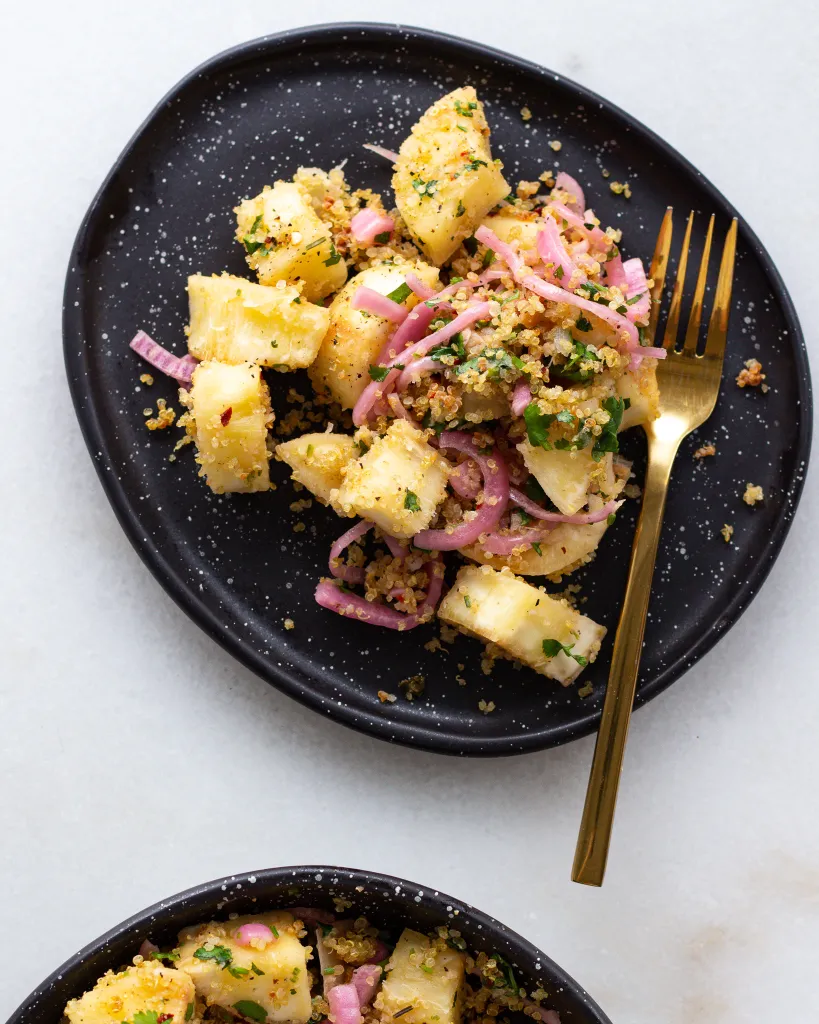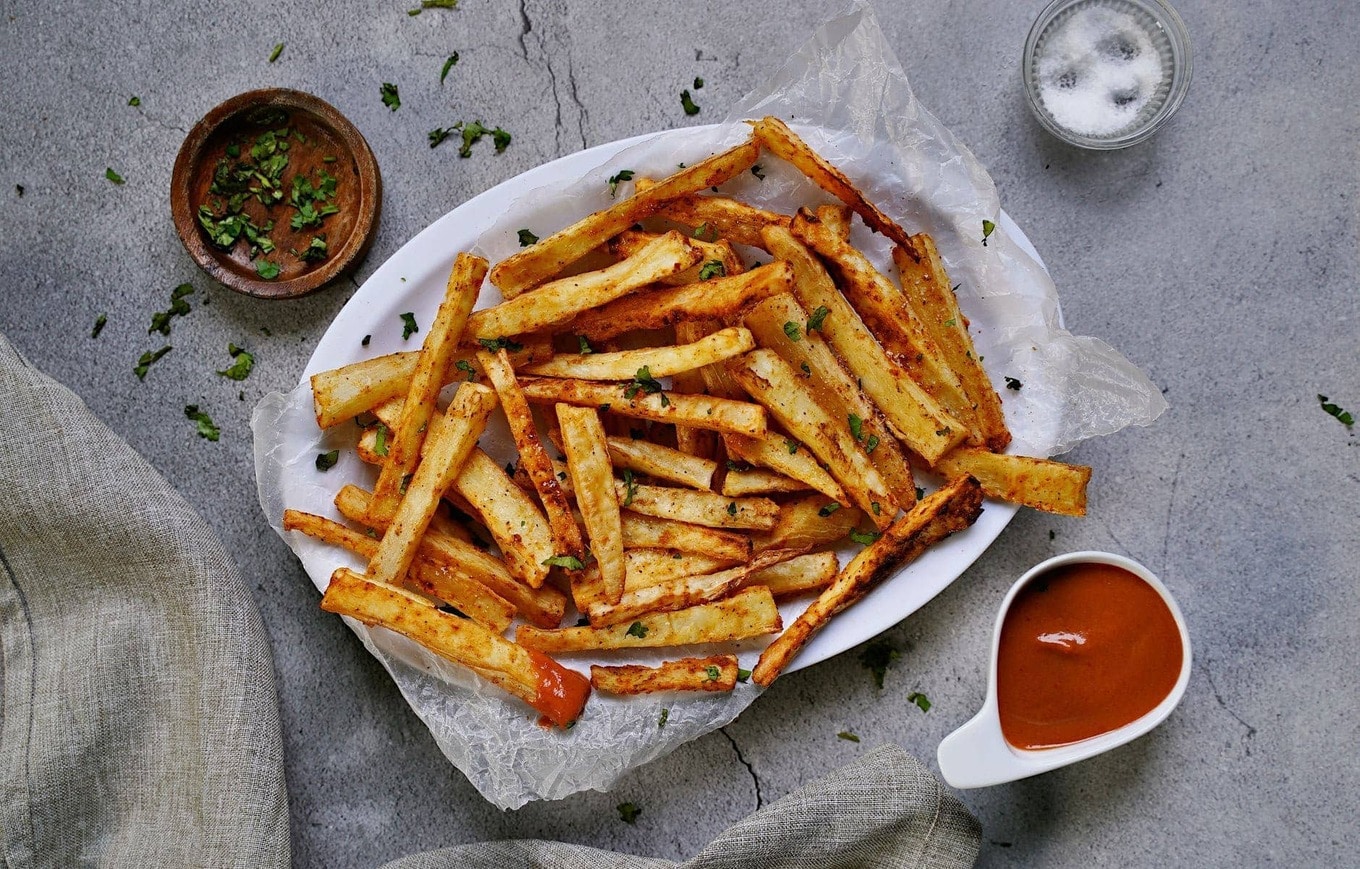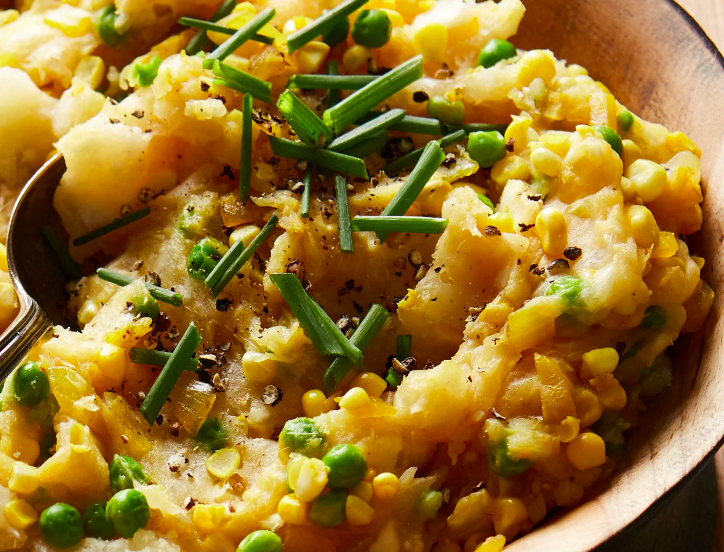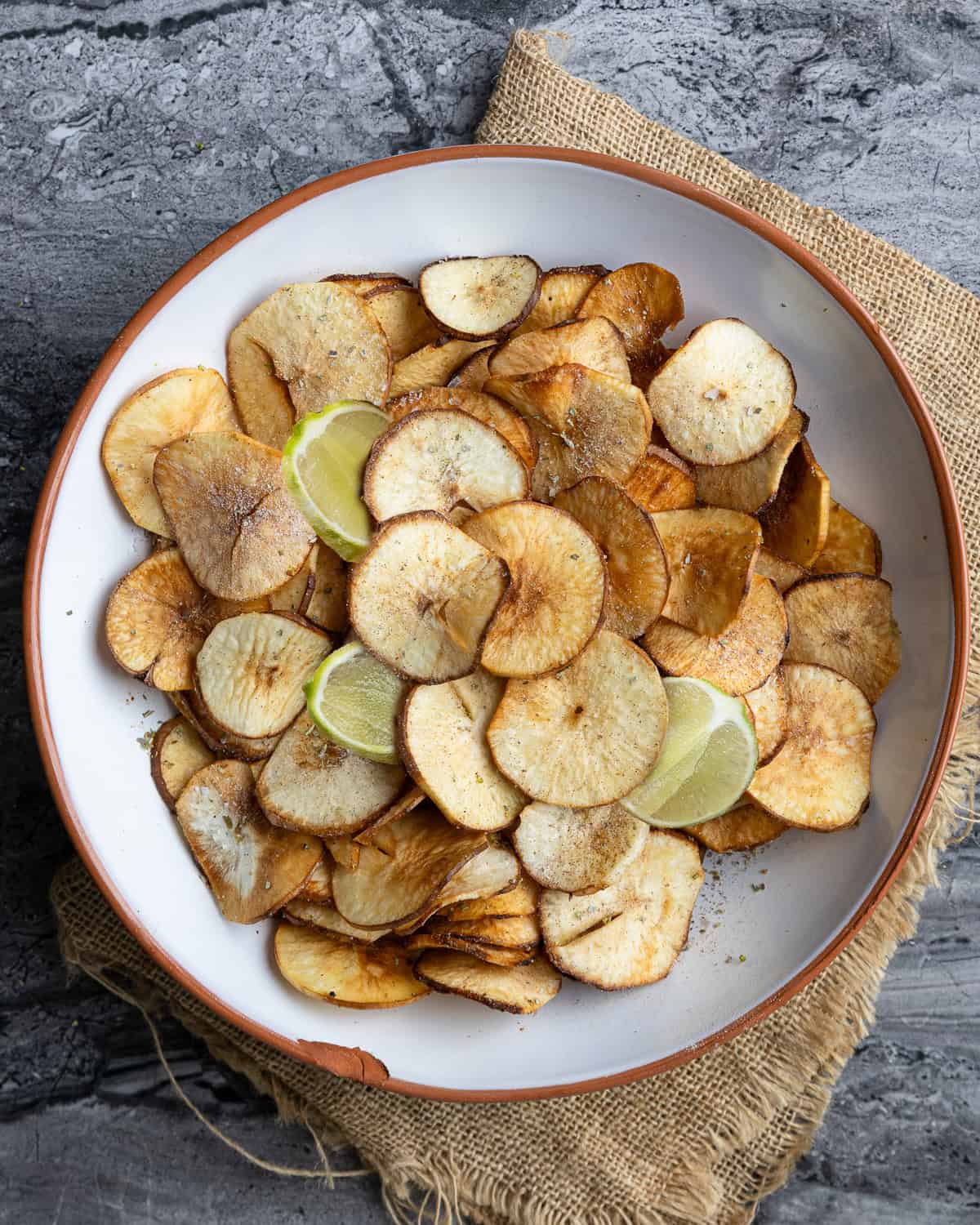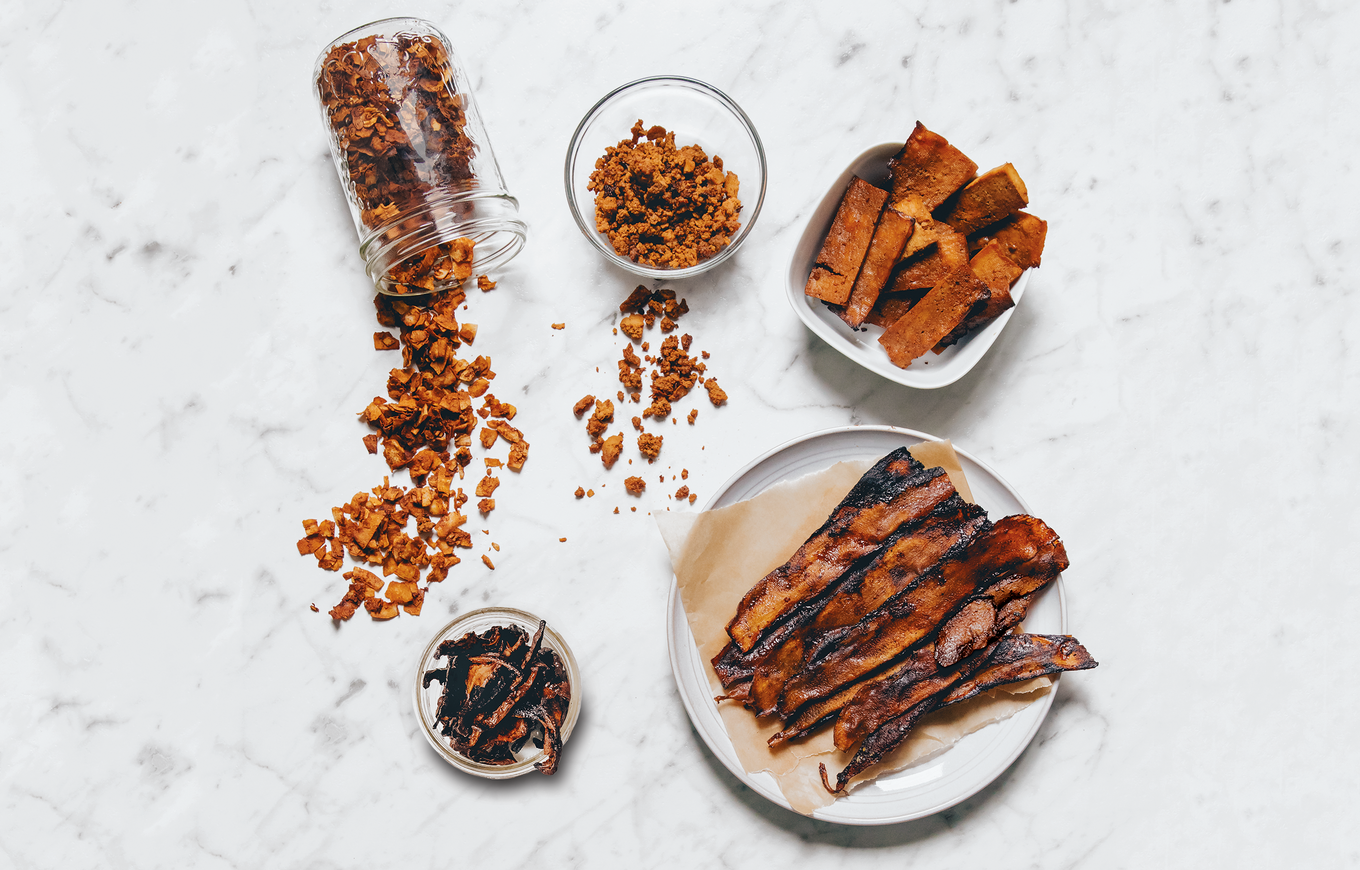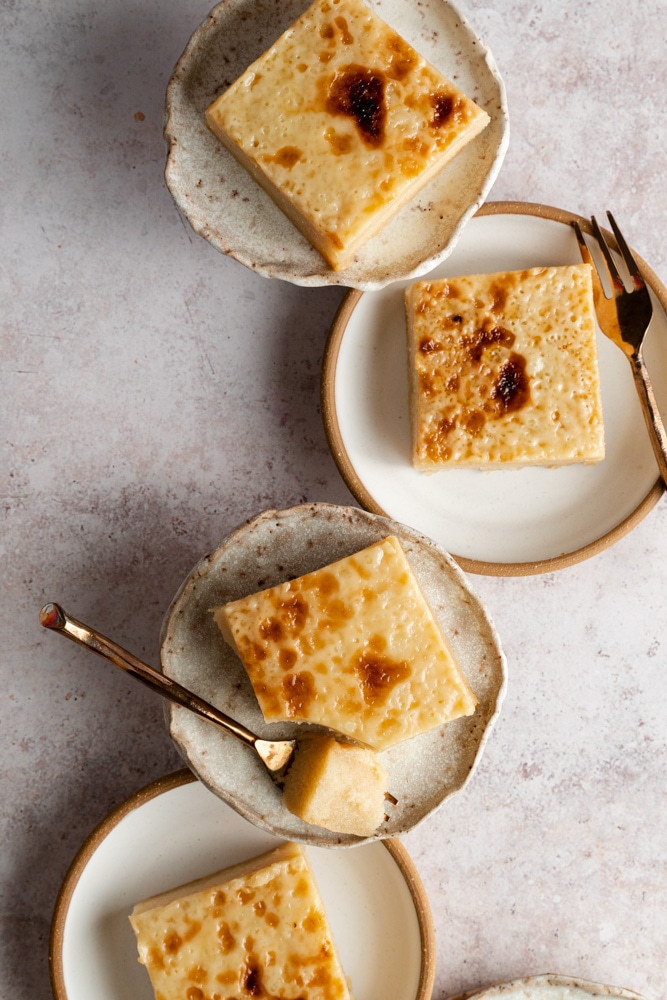Throughout the world, an estimated 800 million people consider cassava root a staple part of their diet. This starchy tuber—also known as yuca, Brazilian arrowroot, and manioc—first originated in South America, but has since made its way around the globe.
During the 16th century, Portuguese traders from Brazil introduced cassava into Africa, and by the early 19th century, the crop had gained widespread distribution throughout tropical Asia after Spanish explorers introduced it to the region, according to the Food and Agriculture Organization of the United Nations.
This global staple, scientists believe, is also poised to help with hunger relief and could help stop soil erosion, according to research published in Conservation Science and Practice. “Evidence suggests [cassava] could potentially revive degraded land and make it productive anew, generating numerous positive socioeconomic and environmental impacts with proper crop management,” Maria Eliza Villarino, researcher and lead author, told PhysOrg.
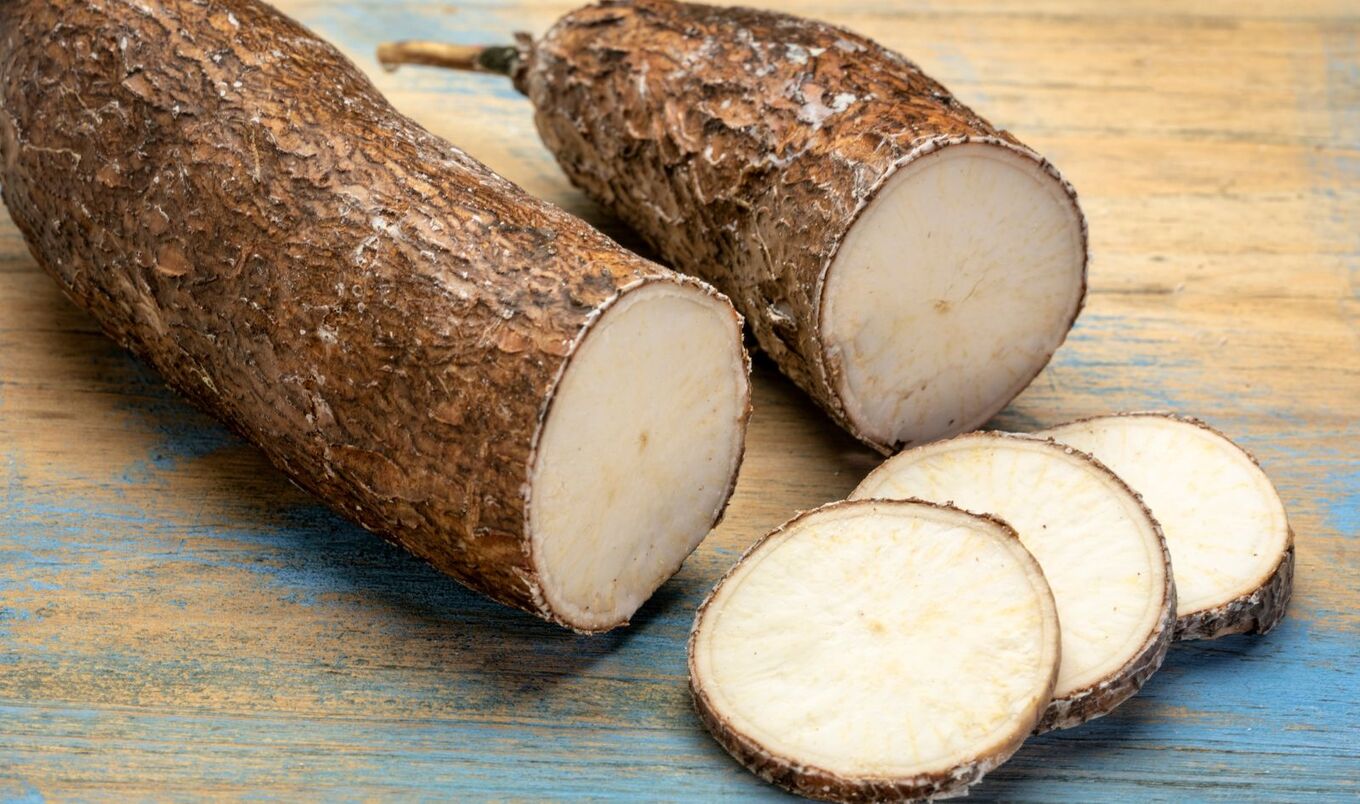 Canva
Canva
With cassava crops revitalizing soil health, farmers could then utilize their land to grow additional commercial crops, helping to boost local economies and provide additional sources of food.
Today, cassava is grown throughout the tropical and subtropical regions; and Nigeria, Thailand, and Indonesia are among the world’s top producers of the crop.
Here, we explain the nutrition of cassava root, the risks of eating it raw, and how to prepare the root properly. Plus, we share some of our favorite recipes.
What is cassava?
Cassava is a shrub that is primarily cultivated for its roots, commonly known in the US as cassava root.
BECOME A VEGNEWS VIP: Get exclusive product deals, freebies, and perks galore!
There are two types of cassava root: bitter and sweet. Most of the cassava found in the US is sweet, but both varieties are poisonous when consumed raw, so it’s important to prepare it correctly when cooking.
Is cassava root healthy?
When properly prepared, cassava root boasts a number of health benefits. The root is high in resistant starch, “a type of starch that bypasses digestion and has properties similar to those of soluble fiber,” explains Healthline. Resistant starch feeds beneficial gut bacteria and may even help reduce inflammation and promote digestive health.
Additionally, cassava root is a good source of vitamin C, which is known to aid collagen production in the body, support immune health function, and more.
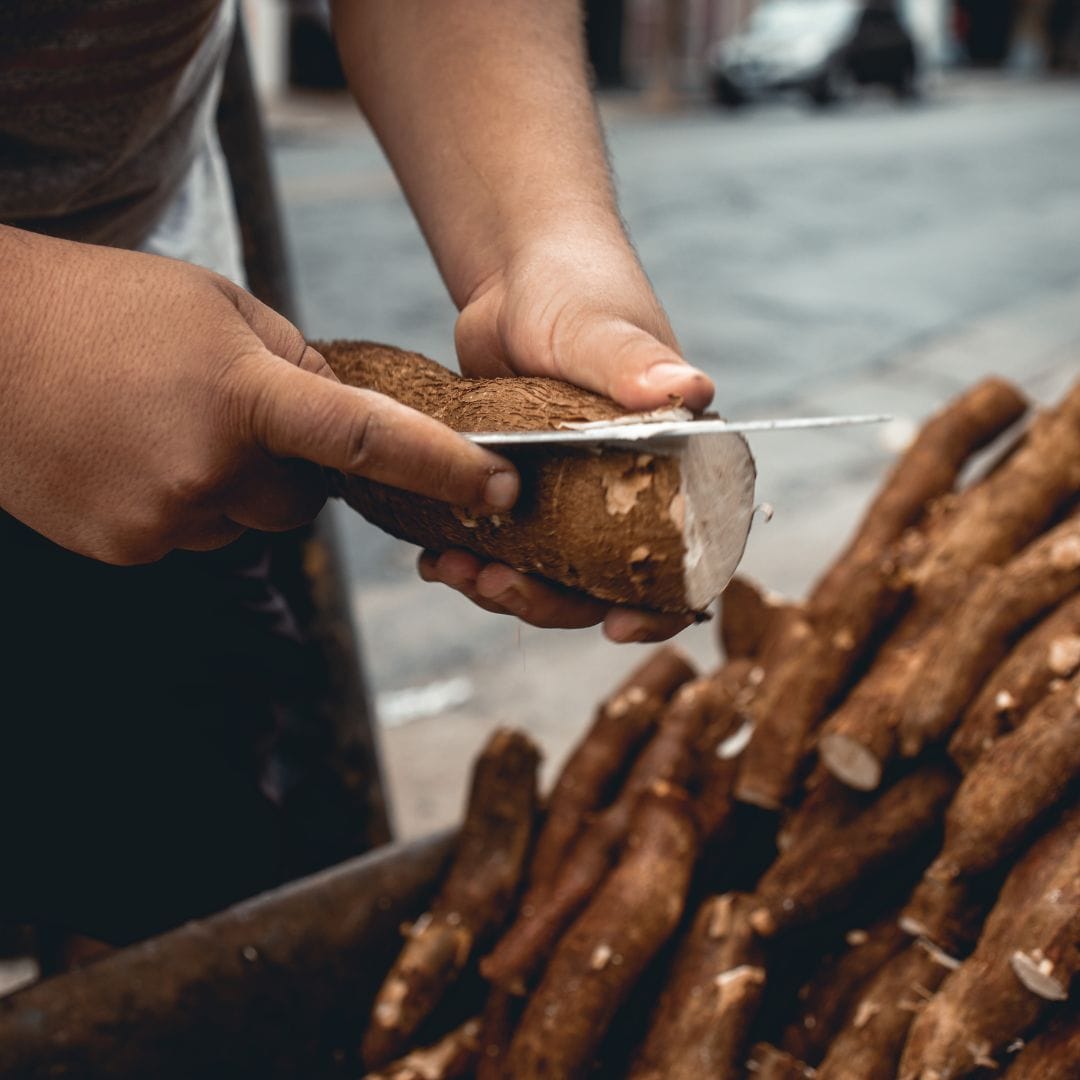 Canva
Canva
According to FoodData Central, 100 grams of cassava root contain 18.2 milligrams of vitamin C, 1.42 grams of protein, 17 milligrams of calcium, 282 milligrams of potassium, and 191 calories.
But it’s crucial to prepare the root correctly, otherwise you risk cyanide poisoning.
Is cassava root poisonous?
Cassava contains cyanogenic glycoside, which are chemicals that release cyanide in the body. “Regularly consuming cyanogenic glycosides or eating them in high amounts increases the risk of cyanide poisoning,” Healthline reports. “Cyanide poisoning is associated with impaired thyroid and nerve function, paralysis, organ damage, and even death.”
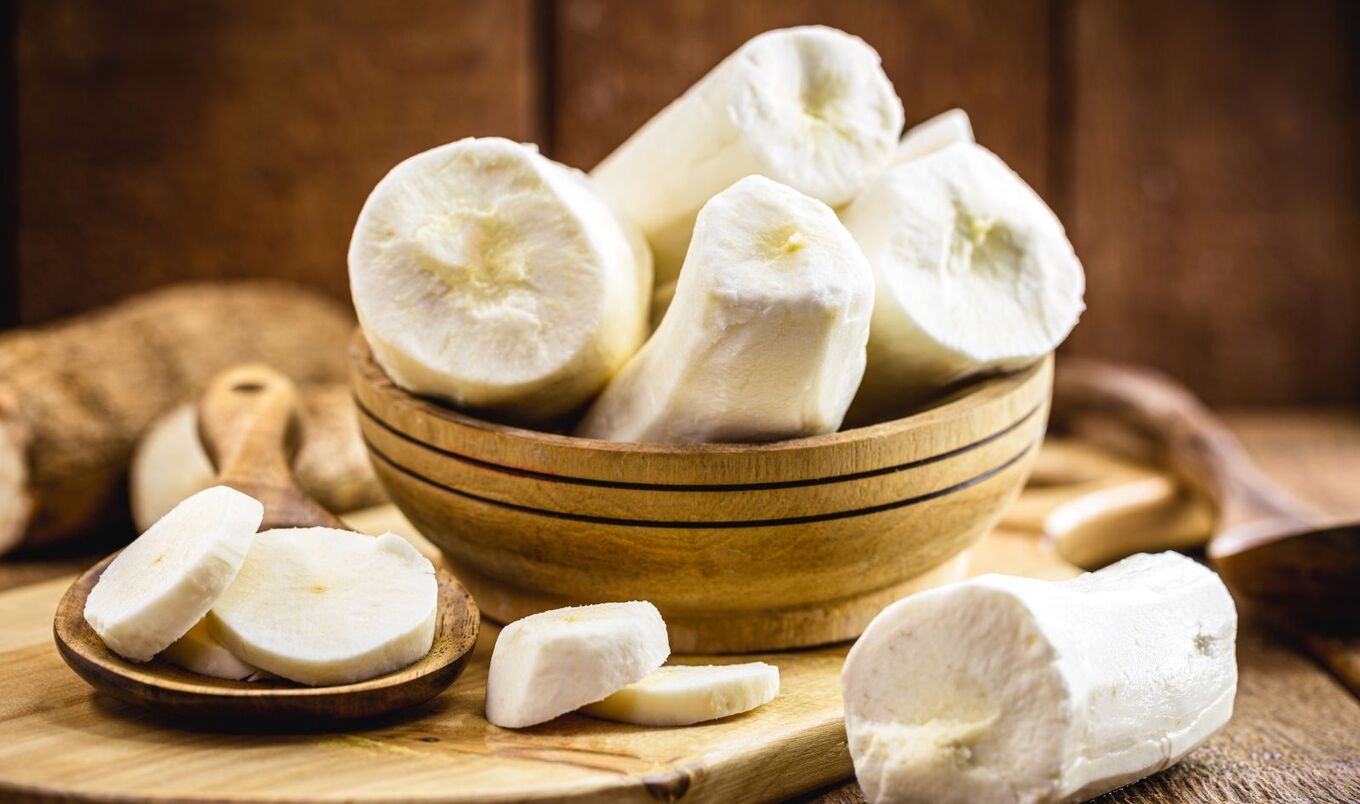 Raw cassava | Canva
Raw cassava | Canva
To avoid consuming cyanide, it’s important to prepare cassava correctly. When prepared properly, the chances of cyanide poisoning from eating cassava are rare.
How to prepare cassava root
Before you eat cassava, you must ensure it’s been properly prepared and cooked. First, you’ll want to peel the rough, woody exterior—this is where the root retains most of its cyanide-making chemicals.
After peeling, soaking cassava in water is recommended to further help reduce the amount of toxic chemicals. As far as soaking time, recommendations vary by source. Healthline, for example, recommends soaking cassava in water anywhere between 48 and 60 hours. The Centers for Disease Control and Prevention, on the other hand, recommends soaking between four to six days. They also recommend scraping off the top layer of the cassava flesh. Some recipes call for a quick, 30-minute soak.
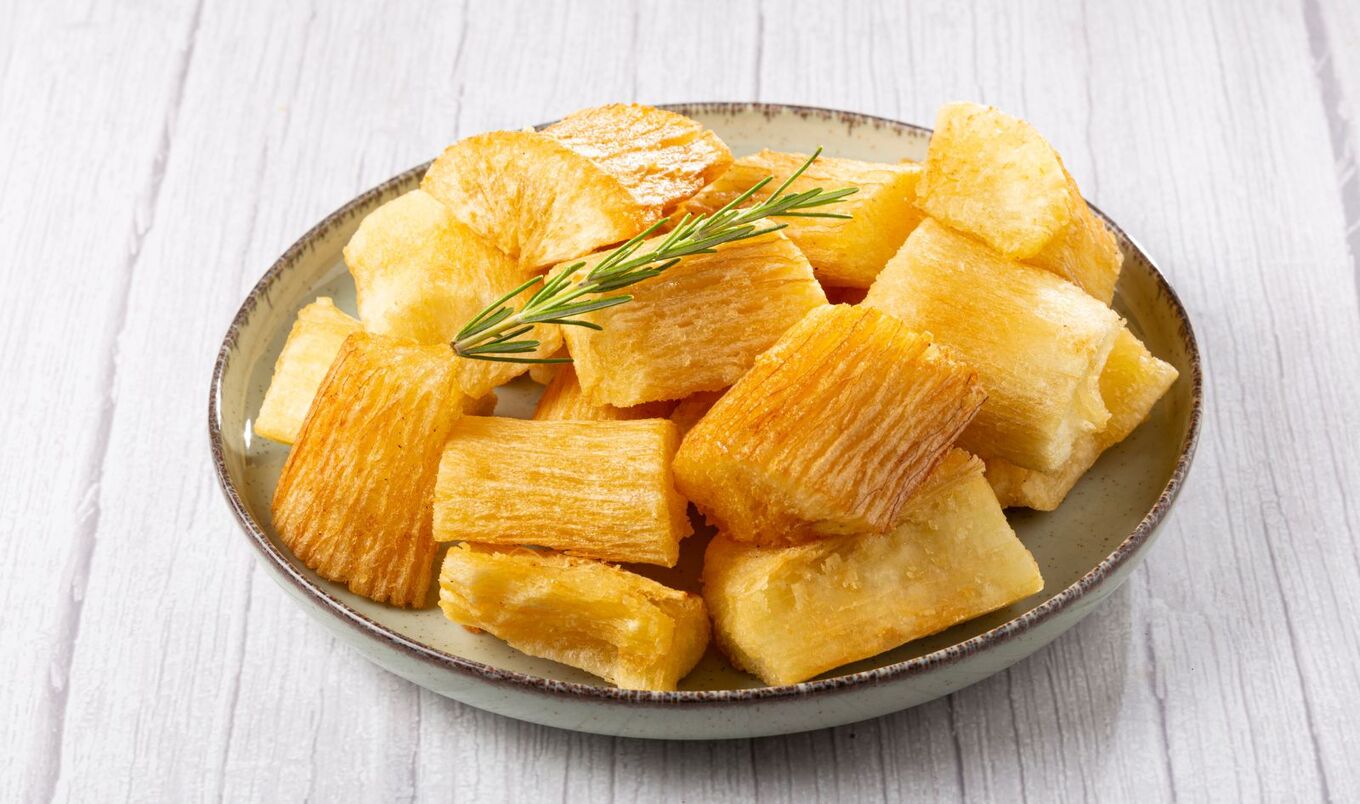 Canva
Canva
And finally, it’s time to cook your cassava root. Boiling, frying, and baking are all popular methods of cooking cassava, but boiling is typically the healthiest and will retain the most vitamin C compared to other methods. Ensure your cassava root is thoroughly cooked before enjoying.
Additionally, cassava can also be processed to create gluten-free cassava flour for baking and tapioca (a starch used in puddings and even boba!).
If you’re new to cassava root, frozen cassava is also widely available at major grocery stores. When going this route, prepare according to the package instructions.
Cassava root recipes
Now that you’ve learned about the benefits—and potential risks—of cassava, follow these recipes to whip up a tasty, cassava-forward dish!
1Crisped Cassava With Cuban-Inspired Mojo
This Cuban-inspired recipe calls for mojo, a citrusy, garlicky marinade commonly used in Cuban cuisine. Made with lemon juice, cilantro, garlic, ginger, pickled red onions, and red pepper flakes, this bright mojo pairs wonderfully with crispy cassava chunks.
Get the recipe
2Cassava Fries
When fried or boiled, cassava has a similar consistency to potatoes. These cassava fries are seasoned with a blend of salt, paprika, garlic powder, black pepper, and onion powder. Prepare in your oven, skillet, or air fryer for crispy golden fries.
Get the recipe
3Mashed Cassava With Corn and Peas
There’s nothing like a side of fluffy mashed potatoes. This recipe swaps out tots for cassava, but the recipe isn’t much different than the typical mashed potatoes how-to (just remember to soak your cassava root prior to cooking). Load up your mash with corn, peas, and garnish with chives. For an even heftier side or meal, top it off with mushroom gravy.
Get the recipe
4Brazilian-Style Cassava Chips
Noticing a trend? Cassava is a great alternative to potatoes. This recipe transforms the starchy root into crisp, Brazilian-style chips perfect for snacking.
Get the recipe
5Cassava Bacon
A marinade of tamari, maple syrup, liquid smoke, and smoked paprika coat thin cassava strips that are then pan fried, transforming them into crispy bacon.
Get the recipe
6Cassava Cake
Cassava cake is a classic Filipinx dessert. Despite its name, the texture of cassava cake is closer to that of mochi. Made using grated cassava root, sugar, and coconut milk, this soft chewy treat is typically topped with caramel, custard, or cheese.
Get the recipe
For more plant-based stories like this, read:
JUMP TO ... Latest News | Recipes | Guides | Health | Subscribe


